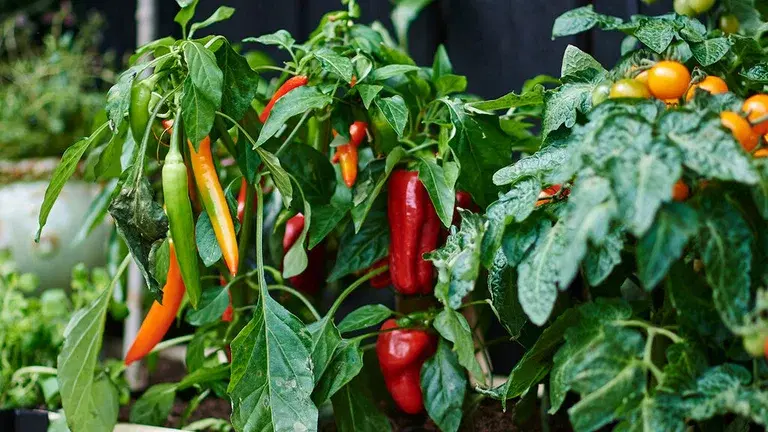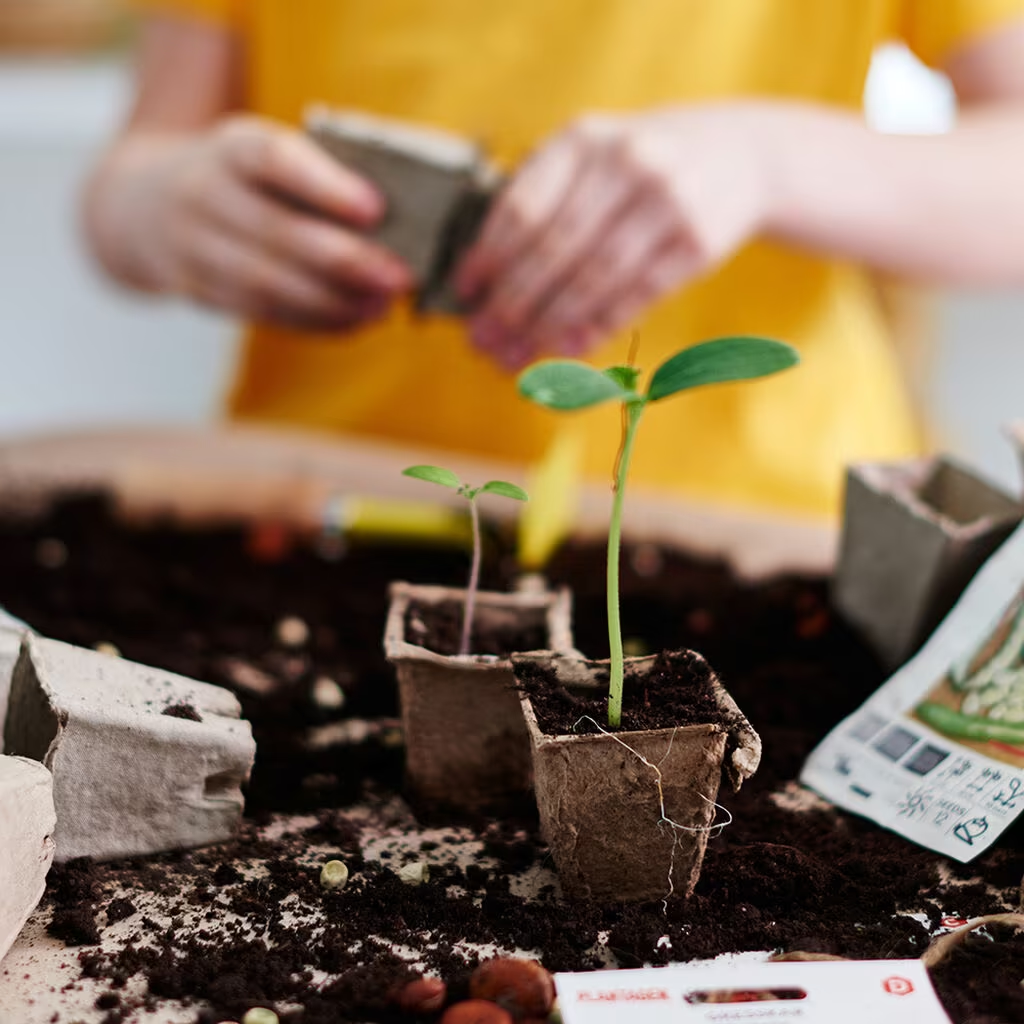Planting box for beginners
Are you a beginner when it comes to gardening, or do you suspect you lack a green thumb? A planting box – or pallet collar – is a super simple and fun way to get started. Here are the simple tips that will quickly and easily give you greens on your plate.

It's possible to grow almost anything in planting boxes – tomatoes, cucumbers, herbs, beans, carrots, leafy greens, and much more. If you only have planting box, it might be wise to avoid things that take up a lot of space. To get the most out of the space, it's also good to plan so that different vegetables take over from each other during the season – and that those you choose can grow together. And don't forget the most important thing, namely to give the planting box regular nutrients and water.
How to get started with growing in a planting box
- Place two planting boxes on top of each other. Choose a sunny location and remember to keep a distance from trees and hedges that could otherwise send roots into your cultivation.
- Lay a thick layer of newspapers or cardboard at the bottom. It can smother any weeds, but also rots over time. This allows your plants to send their roots deeper.
- Fill with fertilized soil. Approximately 200 liters of fertilized soil are needed for two planting boxes. You can also use potting soil that you mix yourself with natural fertilizer, bokashi, or compost. It is then important to continuously add nutrients throughout the season and to water regularly so that the soil does not dry out. Drip irrigation is an easy way to solve this.
- Lightly pack the soil and water before sowing. Choose what you want to plant and then follow the instructions on the seed packet. You can sow many seeds directly, but if you have the opportunity to sow under a grow light indoors a few weeks earlier, you will get sturdy seedlings that are more resistant to, for example, slug attacks. Consider where the light comes from so that taller plants do not shade lower plants. Preferably choose plants with similar needs for nutrients and water.
- Make sure the seeds don't dry out. When they are larger and have stronger root systems, they tolerate drying out better, but in the beginning, you have to be very careful.
- The cultivation must be protected from pests, cats, deer, and other animals. The easiest way is to use a fiber cloth.
What to grow for a spring-to-autumn harvest
It's fun to follow the life in the planting box. Here are some suggestions for growing in a planting box that will give you harvests from April until there's frost outside.
February
- Spinach – a true survivor. A trick is to plant it already in the transition period between winter and spring. Scrape off any snow and other debris on the surface, then cover with soil according to the instructions on the bag. This gives you ready-to-eat spinach early in the spring.
- Dill – can be sown in February or late autumn for early harvesting. Let it have a corner of the planting box or sow it here and there. Dill is not only tasty, it also attracts beneficial predatory insects that eat aphids and other pests. Be careful with watering, as it cannot tolerate drying out.
April
- Swiss chard – When the spinach is harvested, there is room for new seeds. Swiss chard can be planted from April and in several rounds during the summer.
- Lettuce – can also be planted in April. Most varieties germinate as long as the soil temperature is below 20 degrees Celsius. It may be wise to sow some reserve lettuce plants in a cool and bright place indoors as well, so you always have something you can plant out if you should need something more in the planting box.
- Tatsoi – an incredibly fast-growing Asian cabbage variety that is also beautiful. If you have space, it is well worth sowing. A tip is to protect the tatsoi against insect attacks with fleece fabric.
- Radishes – can also be planted in April or in the autumn. They can also be grown among other vegetables to utilize the space.
May
- Sugar snap peas – From May and throughout the summer, you can sow various types of sugar snap peas. Harvest before the pods become too thick, because that's when they taste best.
- Onions – The easiest to succeed with are spring onions that can be bought in stores, but there are all sorts of varieties – such as shallots, red onions, and of course yellow onions. Onions often thrive near dill.
Summer
In the summer, you can continuously harvest dill, sugar snap peas, Swiss chard, and leafy greens. Where there is space in the cultivation, you can, for example, plant lettuce plants that you have grown.
Late summer/autumn
Now it's time to lift the onions and clean away some of what has withered, but the season isn't over for that reason. You can still harvest Swiss chard and sow new leafy greens such as winter lettuce or cold-resistant winter purslane.
Want to grow even more? No problem!
A planting box cultivation can be varied endlessly. You can, for example, interplant the suggestions above with plants that have the goodies underground, like carrots. Or why not vary with edible flowers? Just choose from all the fantastic seeds – and if it feels difficult, there are always ready-made plants to buy.
Read more:
You are here:












